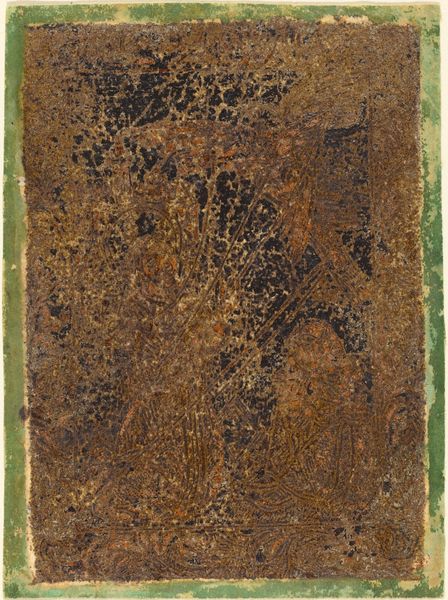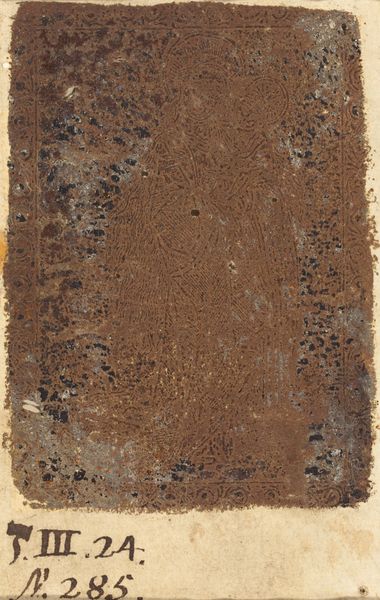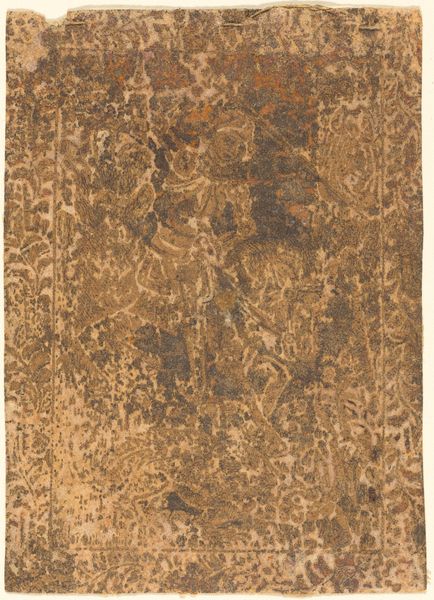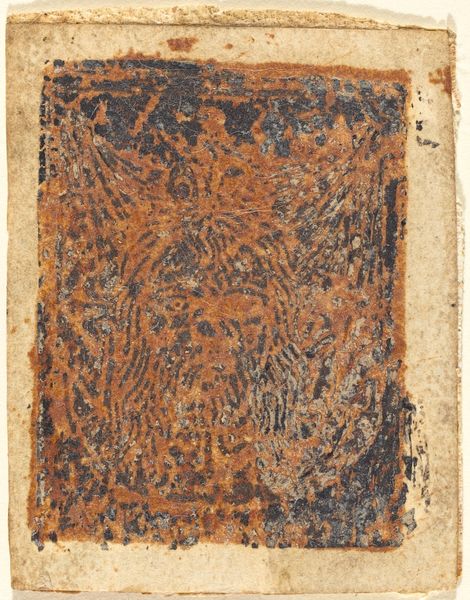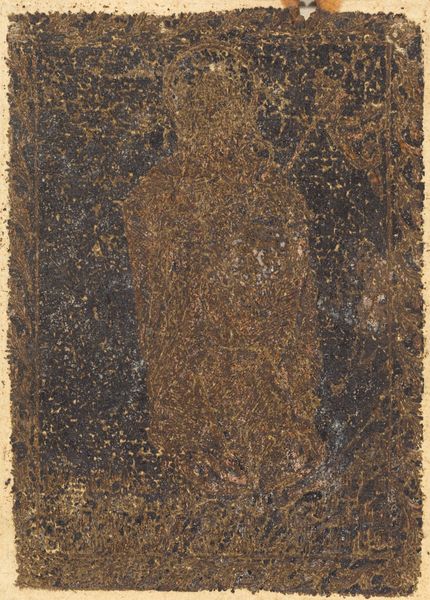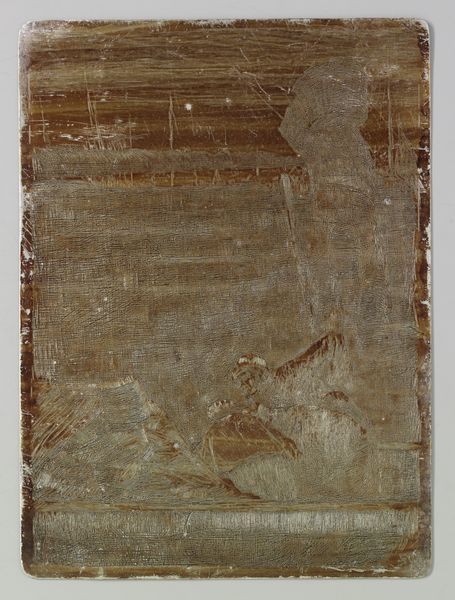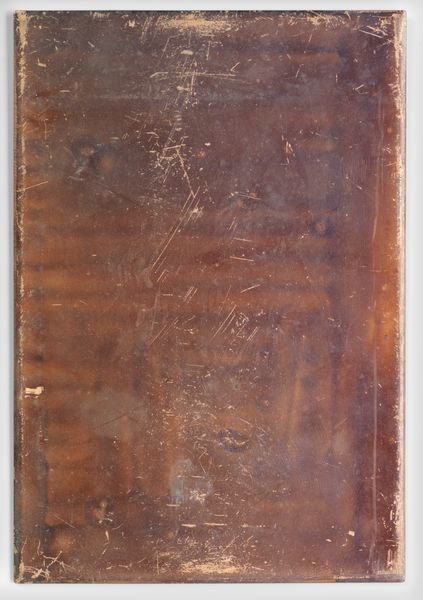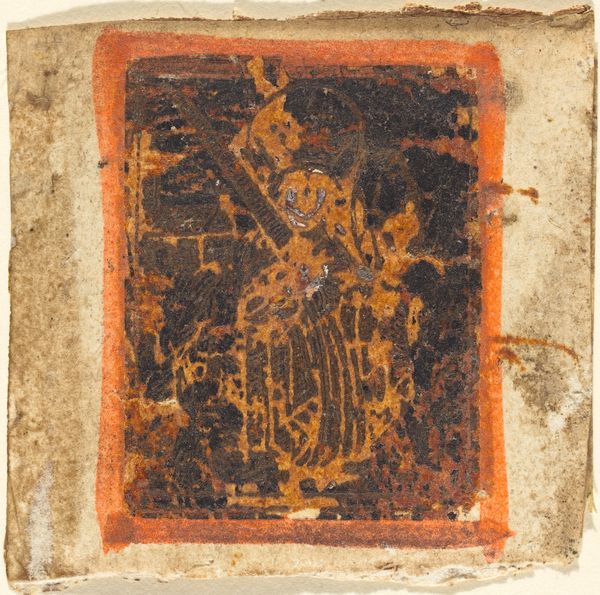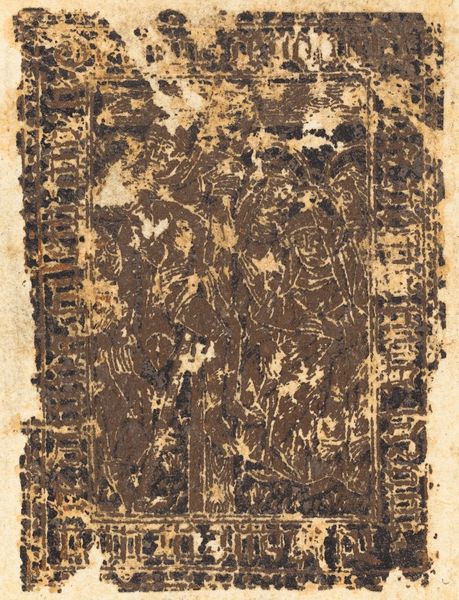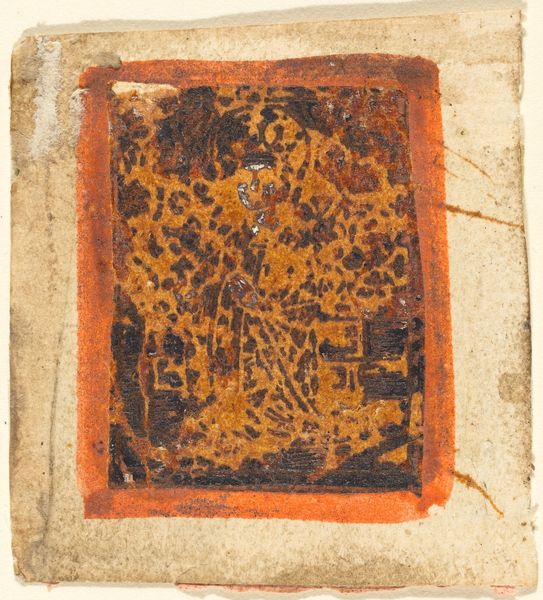
drawing, mixed-media, tempera, print, etching, paper, ink
#
drawing
#
mixed-media
#
medieval
#
tempera
# print
#
etching
#
landscape
#
figuration
#
paper
#
oil painting
#
ink
#
underpainting
#
watercolor
Copyright: National Gallery of Art: CC0 1.0
Editor: This is a piece titled "Madonna and Child," dating back to around 1480. The artist is unknown, and the materials used include tempera and mixed media, and probably print or etching on paper. The damage to the piece obscures the imagery. I am particularly intrigued by the medium, yet the extent of the abrasion makes it a challenge to decipher the composition. What stands out to you when you observe this work? Curator: What strikes me most is how its current state of near-illegibility informs our understanding of religious imagery in the late medieval period. Think about the mass production of devotional images, often reproduced through printmaking techniques that made art accessible beyond wealthy patrons. How does this physical deterioration change its role and our understanding of that access? Editor: I see what you mean. It originally could have been widely distributed to everyday people, but it is now displayed in a museum and treated like something rare and precious. What caused this level of damage anyway? Curator: It's impossible to say definitively without conservation analysis. But we can imagine the print’s existence extending through social spheres we cannot document. It is plausible that constant handling led to the image rubbing off, a visual symbol of devotion turned into material wear and tear, until a later owner found this devotional tool precious enough to enter into a collection or a museum. Do you see how the object’s presumed socio-historical life shapes our view today? Editor: That’s a good point, as it shows the many contexts this piece could have inhabited before it came to the museum. Perhaps understanding how images have become canonized in museums can reveal some untold stories! Curator: Exactly! What we see isn't just an image of the Madonna, but a relic that embodies shifting cultural values around religion, art, and ownership.
Comments
No comments
Be the first to comment and join the conversation on the ultimate creative platform.
